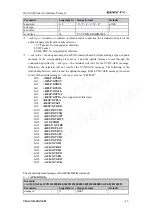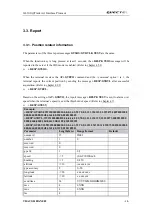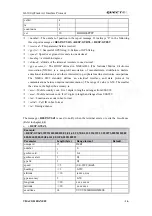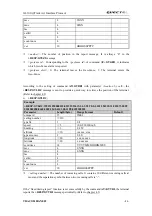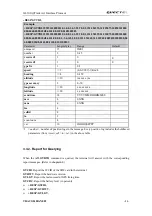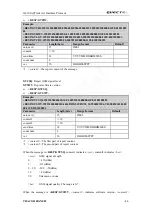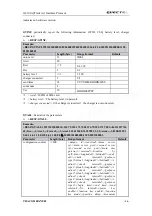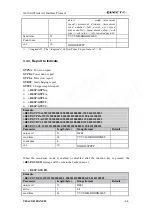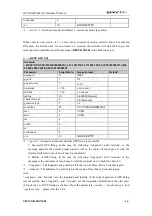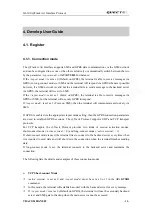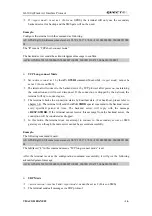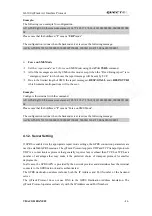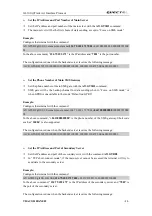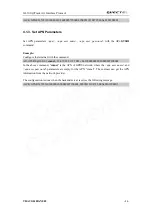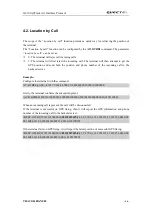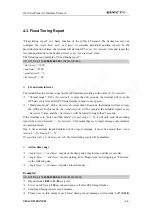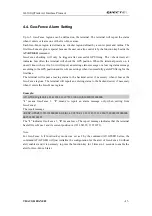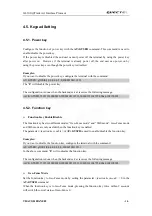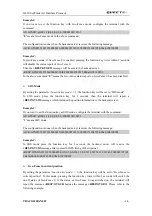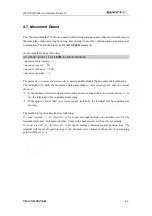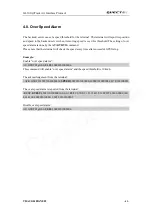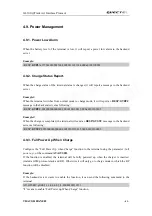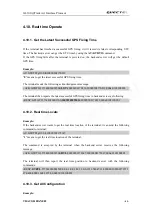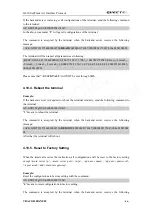
GL100 @Track Air Interface Protocol
Example:
The following is an example for configuration:
AT+GTSRI=gl100,0,
2
,cmnet,cmnet,cmnet,124.79.182.171,7001,+8613888888888,200808071000
01
Please note that the boldfaced “
2
” means “
UDP
mode”
The configuration is done when the backend server receives the following message:
+ACK:GTSRI,359231030000010,20080807100001,20090112104725,000a,0102100203
¾
Force on SMS Mode
Set the <
report mode
> as 2 (Force on SMS Mode) using the
AT+GTSRI
command.
All of the messages are sent by SMS in this mode except when the “Fixed timing report” is in
“emergency mode” in which case the report message will be sent by TCP.
Due to the limited length of SMS, the report messages
+RESP:GTALL
and
+RESP:GTTRI
which contains multi-positions will not be sent.
Example:
Configure the terminal with the command:
AT+GTSRI=gl100,
2
,0,cmnet,cmnet,cmnet,124.79.182.171,7001,+8613888888888,200808071000
01
Please note that the boldfaced “
2
” means “Force on SMS Mode”.
The configuration is done when the backend server receives the following message:
+ACK:GTSRI,359231030000010,20080807100001,20090112104725,000a,0102100203
4.1.2. Server Setting
If GPRS is enabled via the appropriate report mode settings, the GPRS connection parameters are
used to establish GPRS sessions. The @Track Protocol supports UDP and TCP transport protocols.
UDP is a connectionless protocol that generally requires less overhead than TCP, but TCP has a
number of advantages that may make it the preferred choice of transport protocol for smaller
deployments.
In all cases, the GPRS APN is provided by the network provider and determines how the terminal
connects to the GPRS network and is authenticated.
The GPRS destination address includes both the IP Address and Port Number of the backend
server.
The @Track Protocol does not use DNS in the GPRS Destination Address translation. The
@Track Protocol operates exclusively with the IP Addresses and Port Numbers.
TRACGL100AN002
- 31 -
Quectel
Confidential

